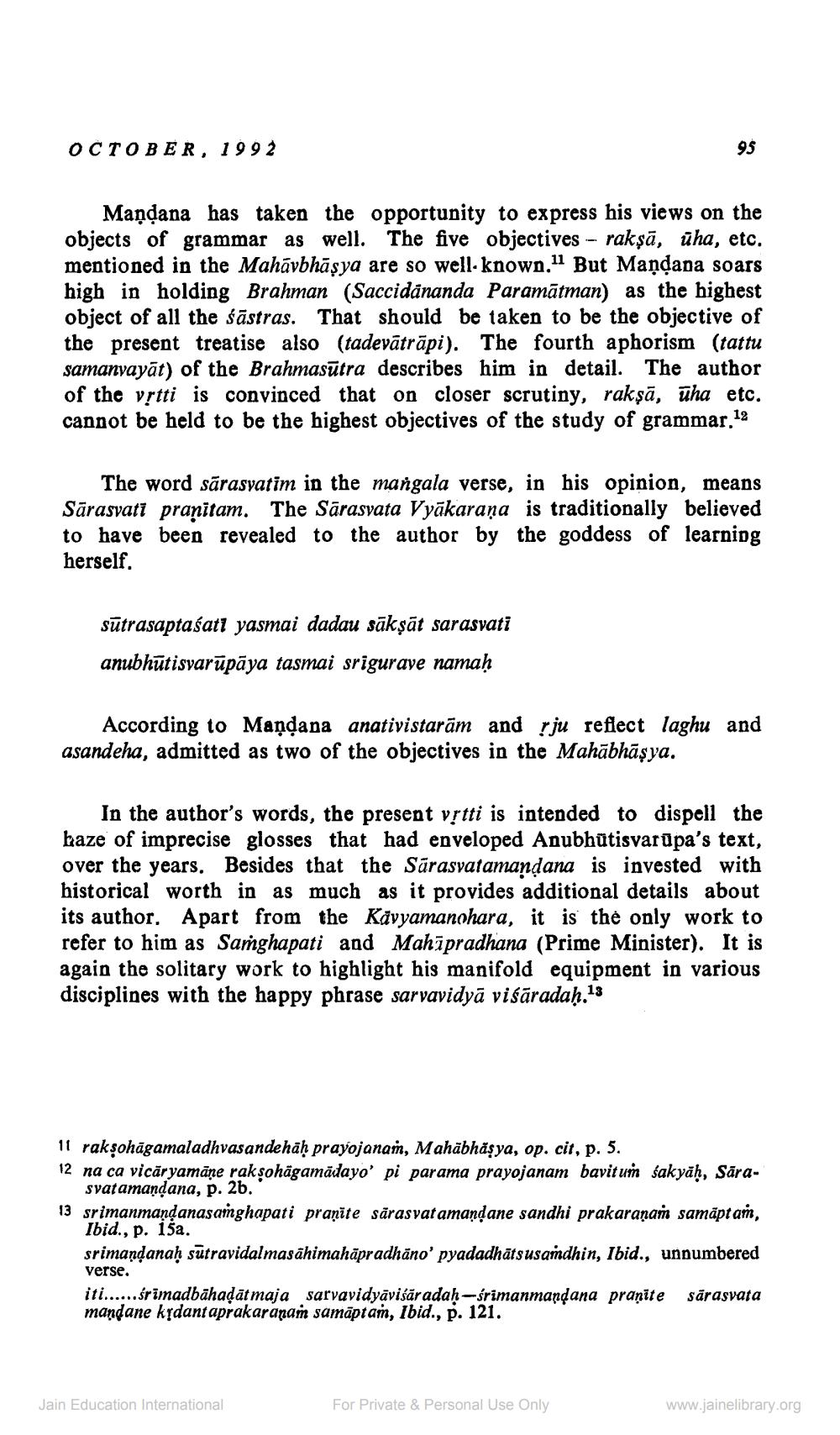________________
OCTOBER, 1992
95
Mandana has taken the opportunity to express his views on the objects of grammar as well. The five objectives - rakṣā, üha, etc. mentioned in the Mahāvbhāşya are so well-known.11 But Maņdana soars high in holding Brahman (Saccidananda Paramātman) as the highest object of all the śāstras. That should be taken to be the objective of the present treatise also (tadevātrāpi). The fourth aphorism (tattu samanvayāt) of the Brahmasūtra describes him in detail. The author of the vștti is convinced that on closer scrutiny, rakṣā, üha etc. cannot be held to be the highest objectives of the study of grammar.12
The word sārasvatim in the mangala verse, in his opinion, means Sārasvati pranitam. The Sarasvata Vyākarana is traditionally believed to have been revealed to the author by the goddess of learning herself.
sūtrasaptaśati yasmai dadau sākṣāt sarasvati anubhūtisvarūpāya tasmai srigurave namaḥ
According to Manqana anativistarām and rju reflect laghu and asandeha, admitted as two of the objectives in the Mahābhāşya.
In the author's words, the present vrtti is intended to dispell the haze of imprecise glosses that had enveloped Anubhūtisvarūpa's text, over the years. Besides that the Sārasvatamandana is invested with historical worth in as much as it provides additional details about its author. Apart from the Kävyamanohara, it is the only work to refer to him as Samghapati and Mahīpradhana (Prime Minister). It is again the solitary work to highlight his manifold equipment in various disciplines with the happy phrase sarvavidyā visāradaḥ.13
11 rak sohāgamaladhvasandehāḥ prayojanam, Mahābhäsya, op. cit, p. 5. 12 na ca vicāryamāne rak sohägamādayo' pi parama prayojanam bavit um śakyah, Sāra
svatamaņdana, p. 2b. 13 srimanmandanasanghapati pranite särasvat amandane sandhi prakaranam samāptam,
Ibid., p. iša. srimandanaḥ sutravidalmasahimahāpradhāno' pyadadhātsusamdhin, Ibid., unnumbered verse. iti......śrīmadbāhadātmaja sarvavidyāvisāradah--srimanmandana pranite Sārasvata mandane krdant aprakaranam samāptan, Ibid., p. 121.
Jain Education International
For Private & Personal Use Only
www.jainelibrary.org




